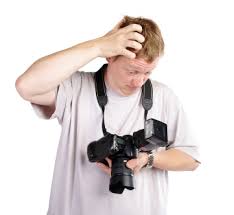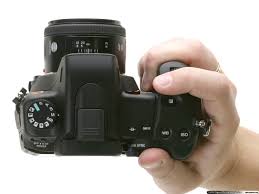How to learn about digital photography
There are many ways to learn about digital photography and how to teach yourself digital photography. The main way that I find best is by doing. Read about a few things then go out and experiment. Don’t try to learn everything all at once.
The nice thing these days with the digital age is that you can get instant gratification and you can instantly see what you like or what you want to change about the photographic image that you just captured.
Just to go over a few things about photography
To me, my artistic photography is expressing and capturing a feeling and a mood in a subject. Telling a story about what you see through the lens and sharing that with your audience.
So I am going to go over a few things here that I hope will help to improve your photography and for you to gain confidence in your new found photographic abilities.
I believe that most of us have mixed feelings when it comes to our own photographs. We know it is basically simple in many ways but after snapping a few poor photos and not capturing what we have envisioned in our minds before we pressed the trigger, we decide that we are a bad photographer.
Well the truth is that once you can understand a few of the basic aspects, and a grasp a few simple ideas, you can become a photographer.
So I think that the first step in this is to BAN these three excuses:
- My photographs never turn out the way I expect, so why should I bother
- There’s way to much technology and software involved for me to get it right
- It is going to take me way to much time to get really good at this
Rid your thoughts, about these four myths about photography
- Photography is way to technical.
- The camera does everything for you.

- You need really expensive cameras and gear to take really good photos.
- All great photographers are born artists – which simply is not true.
So lets look at the very simplified explanation about digital cameras.
The digital camera – in a nutshell
How the digital camera captures or records an image
As you press the button on your camera to take a photograph, your cameras aperture opens and light streams in through the lens. The incoming image or picture information lands on the image sensor chip and is broken down into millions of pixels.
This sensor also measures all the colors and the brightness of each of these millions of pixels and converts them into numbers that your computer can read and convert back to the image that you can see on your computer screen.
Exposure
The exposure, or the light that comes into the camera through the lens is controlled by three things.
- Aperture: The size of the opening in the lens that allows light to come through. In regards to the creativity, one of the most important things to remember is that size does matter.
- Shutter speed: The simple explanation of shutter speed is the speed which the shutter of the camera opens and closes, to allow light to your camera sensor.
- ISO: Settings simply is the level of sensitivity the camera has to the availability of light. So the lower the ISO number the less sensitive the camera will be to light and vice versa the higher the number ISO the more the camera increases its sensitivity to light.

You are right when you say that it is best to learn a little at a time and then go practice what you have learnt.
Photography can get very technical, so I think to consolidate what you learn you need to practise. I bought a fancy Canon camera a few years back, and it took me a while to learn about all the things I could manipulate, but it was a rewarding journey and I took some magnificent photos.
Also, thank you for enlightening me on the topic of exposure. I never fully understood what that meant and how it worked before reading your article.
Thank you very much for your comments Michel. I am happy that my article helped you understand something new about your camera. It is really exciting when those moments happen. I am constantly learning and I am happy to share with others what I can to help them get more out of their camera’s.
Hi Monika,
I suck at take pictures with my phone or with my camera.
I never get images that you (or me) can say: Wow!!
I hope with the information you have here I will succeed with this.
I also love the information on how camera converts the light to a real picture…great info.
Thanks
Hi Efi,
I hope that with the information that I will be sharing here on my site, that it will help you improve your images, whether they are taken with your iphone or with a traditional camera.
Please check back as I am working on more lessons and information regarding composition and how to create interest in you images. With a little practice with learning a few of my photo tidbits, you will work your way to that WoW image.
Thank you for checking in and feel free to contact me if you have any questions.
I recently had the experience to try out a digital SLR camera, since I don’t have one myself, just the phone, it was great fun playing around with the zoom, taking up close photos of objects, also the depth and quality of the photos were amazing, and I didn’t really have too much idea what I was doing. The cameras can be overwhelming at first glance but it’s so easy to take many photos and just practice since it’s easy to just delete whatever doesn’t work!
Photographing and capturing stories and time is very rewarding and interesting. It is amazing when you just look around you, where every your are and look at the smallest thing and then look through the lens at the same thing.. you will be amazed at what you can capture that you did not see before. Take the opportunity to go out and use a SLR camera when you get a change and create.
Very good post and it reminds me to my dad when he was learning digital photography.
He wanted to be the best already after the first lesson, luckily his teacher told him to take it easy, it will go step by step, as you mentioned, you will improve by time.
Also it depends how you take the picture, the way you stand, the lightning, it needs time before you get used to that.
I will show him this post to let hem understand he needed to be patient and his teacher was right.
Thanks for sharing it with us!
Hi Emmanuel,
That is exciting that your dad shared with you his journey to learn digital photography. I does take patience and learning to see things in a different way, the way the camera sees them.
There are many aspects that make an image, from seeing something interesting to creating the image of what you see. Light is very important and different light will give you a different feel to your subject.
If you or your dad have any questions or information you would like to share feel free to comment and I will help.
I am always interested in what interesting subjects people like to photograph so let me know what types of photographs interest you and your dad.
Hi,
I would love to capture the feeling and tell a story, but am not sure how this connects with things like exposure, shutter speed and ISO.
Do you think taking a lot of pictures and then choosing the best one helps?
I have noticed that wedding pictures often have a fuzzy bit around the edge – is that supposed to give us warm fuzzy feelings or is it just that we are then focused on the people in the photo.
What I really find disappointing is when you are looking at an amazing landscape and photograph it it doesn’t (when they are my photos) capture the magnificence of the scene.
I would really welcome your thoughts on any of these areas.
Thank you!
Julia
Hi Julia,
Thank you for visiting my site.
The exposure triangle which includes exposure, shutter speed and ISO all affects the way the image that you are taking will turn out.
Getting out an experimenting with your camera and settings is the way you learn but it is also important to learn a bit about how the camera sees and sees light.
What you are mentioning about “fuzzy bit around the edge” of images you seen in wedding photos, is that the photographer was shooting the image with a very shallow depth of field or DOF and focusing on the people or person that makes them stand out and not blend into the background. This is accomplished by using a lens with a very large aperture opening eg F1.8 or even F2.8 will give you this affect.
To answer your other queery about photographing and capturing an amazing landscape. Here again your DOF comes into play as well as lens choice. You see a vast area and to capture this setting a higher F-stop like F16 or even F22 depending on the light will give you a greater area that will be in focus and using a wider lens such as a 18mm or a 24mm would be ok too will make it possible for your camera to see a wider area.
I hope these tips help you. Please feel free to drop me any additional questions you may have in the comments and I will help you.
Great article on the insights of digital photography.
I think it’s great that you highlighted the points about the excuses that people have before they start their digital photography journey. Anyone can pick up a digital camera and learn very quickly – the best practice for me is to just go out into the world and start taking pictures.
Like you said above, you need try to capture the feeling and mood. Once you get this, you can then really start to tell a story with your audience.
Thanks for sharing.
I am glad that you enjoyed my article. Once a person begins to get more relaxed with their camera and just experiment and just start to see with the camera you can see so many amazing things.
Its all in capturing the story in what you see.